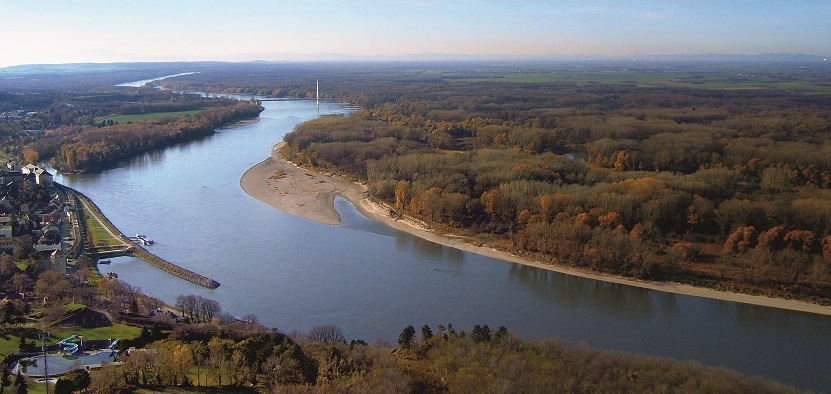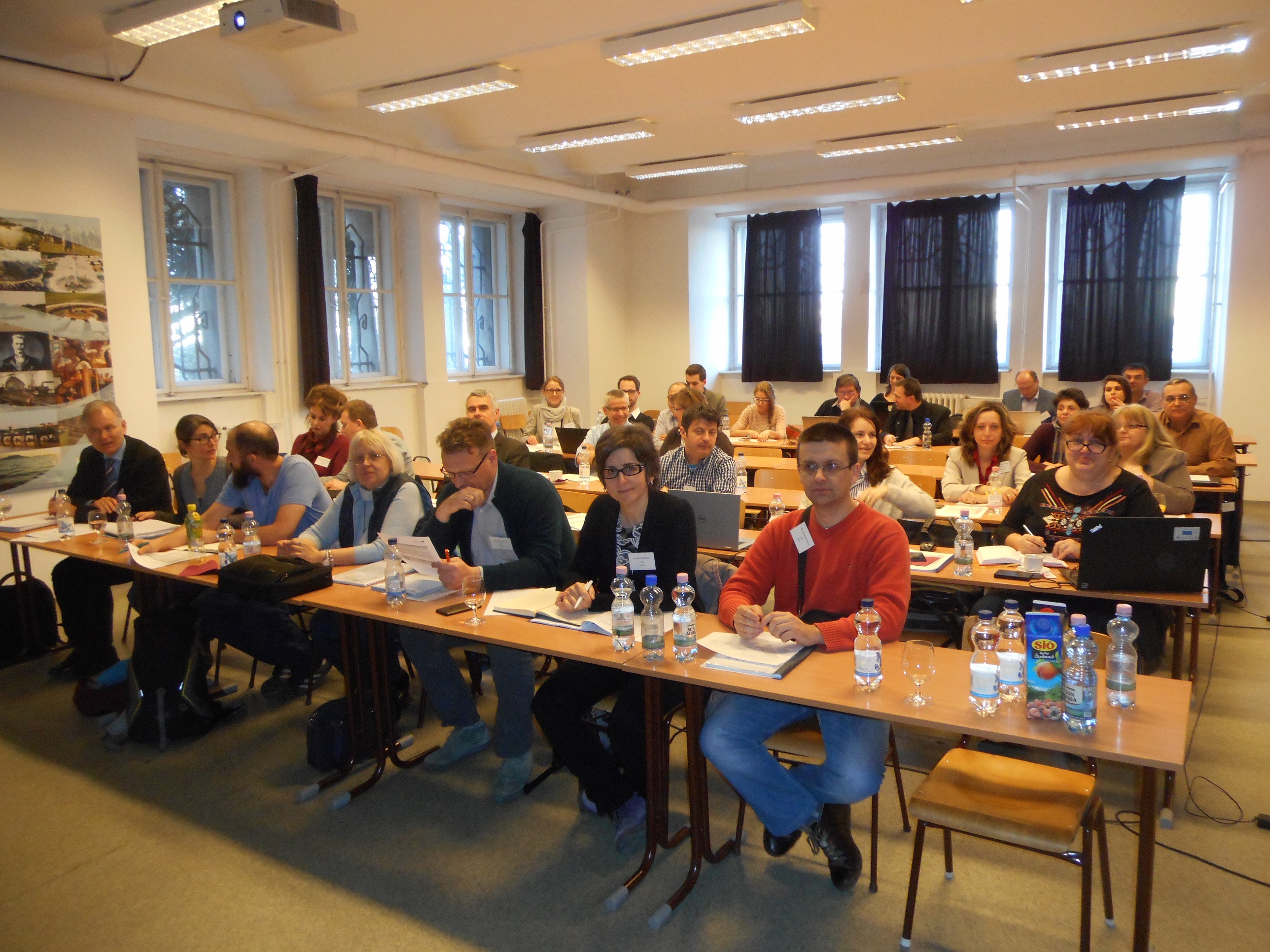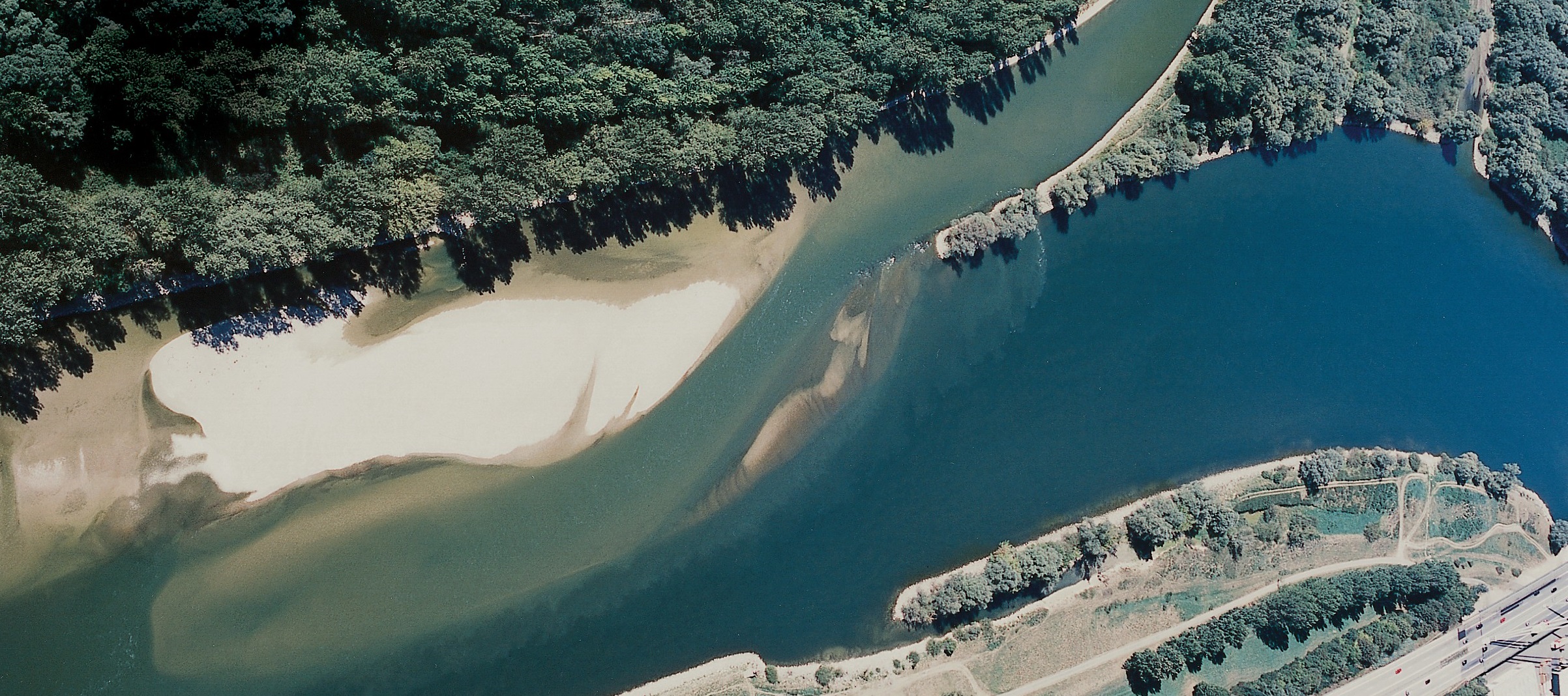|
|
| |
| |
 |
1) Danube Sediment Management - Restoration of the Sediment Balance in the Danube River
|
| |
 |
| |
|
Sediments are a natural part of aquatic systems. Strong alterations of the Danube River have led to significant changes in the sediment load. This imbalance contributes to flood risks, reduces navigation possibilities and hydropower production and leads to the loss of biodiversity within the Danube Basin. For a period of two-and-a-half years, 14 project partners from higher education institutions and numerous sectoral agencies in 9 countries along the Danube River will address these challenges together in the DanubeSediment project, which is co-funded by the European Union.
Closing knowledge gaps: In a first step, the project team will collect sediment transport data in the Danube River and its main tributaries. This builds the foundation for a Danube-wide sediment balance that will analyse the sinks, sources and redistribution of sediment within the Danube - from the Black Forest to the Black Sea. To achieve sustainable sediment management, the key drivers of sediment discontinuity must be understood through a risk assessment of their impact.
Strengthening governance: One main project output is the Danube Sediment Management Guidance (DSMG). It will contain recommendations for reducing the impact of a disturbed sediment balance, e.g. on the ecological status and on flood risk along the river. By feeding into the Danube River Management Plan (DRBMP) and the Danube Flood Risk Management Plan (DFRMP), issued by the International Commission for the Protection of the Danube River (ICPDR), the project shall directly contribute to transnational water management and flood risk prevention. Further information on these plans can be found in section 5 below.
International Training Workshops will ensure the transfer of knowledge to key target groups – such as hydropower, navigation, flood risk management and river basin management, including ecology throughout the Danube River Basin. Furthermore, the stakeholders will also be addressed by a Sediment Manual for Stakeholders, which shall provide background information and concrete examples for implementing good practice measures.
Up-to-date information on DanubeSediment, news, events and photos can be found under dtp.interreg-danube.eu/danubesediment.
|
|
| |
 |
2) STATUS-QUO on important project Steps
|
| |
|
The first Internal Project Kick-Off Event took place at the beginning of March at the BME in Budapest (see section 4 for further information). DanubeSediment project partners discussed project management, communication activities and first steps in the technical work packages, with a focus on sediment data collection.
The DanubeSediment project was officially launched during the “Transnational Cooperation for Sustainable River Basin Management Conference” on 11 April 2017 at the BME in Budapest (see section 3 for further information).
The first step in sediment data collection included the gathering of information on sediment collection methods and procedures for all monitoring sites along the Danube and its largest tributaries. In parallel, the project partners are currently discussing which pilot areas are relevant for the project, e.g. to collect key drivers that impact sediment quantity along the Danube.
Building on the information provided from each monitoring site, a thorough collection of sediment data will be undertaken. A first assessment of this data will take place at the next project meeting in June 2017 in Bratislava.
|
|
| |
 |
3) Transnational Cooperation for Sustainable River Basin Management CONFERENCE - 11 April 2017
|
| |
 |
|
The “Transnational Cooperation for Sustainable River Basin Management Conference” was held on 11 April 2017 as a cross-fertilization event at the Budapest University of Technology and Economics (BME) in Budapest. It introduced the combined efforts of projects supported by the Danube Transnational Programme that aim to improve water management and cultural identity in the Danube River basin.
The DanubeSediment Project Launch Event in the afternoon opened the exchange between project partners and key stakeholders from across the Danube Region. During two blocks on knowledge building and governance our work package leaders showcased the goals, activities and outputs of our project. In an open discussion, our associated strategic partners and interested stakeholders had the chance to discuss their views on the expectancies for sediment management in the fields of hydropower generation, nature protection and fairway maintenance.
Please see our news for further details.
|
|
| |
 |
4) INTERNAL PROJECT KICK-OFF MEETING, 8 – 9 March 2017
|
| |
 |
|
DanubeSediment project partners met for their first internal project kick-off meeting at the beginning of March at the BME in Budapest.
Besides organizational and technical matters concerning the implementation of DanubeSediment in the framework of the DTP-program, the meeting addressed e.g. modalities and methodologies of data collection and the deployment of resources for upcoming measurement campaigns.
During an interactive communication workshop, a SWOT analysis helped to identify assets and risks that project partners see in the framework of their communication activities on DanubeSediment.
Please see our news for further details.
|
|
| |
 |
5) THE DANUBE RIVER BASIN MANAGEMENT PLAN AND THE DANUBE FLOOD RISK MANAGEMENT PLAN – WHY ARE THE RESULTS OF DANUBESEDIMENT SO IMPORTANT FOR THE TRANSNATIONAL PROTECTION OF THE DANUBE RIVER
|
| |
 |
| |
|
The ICPDR strives to improve and protect a high level of water quality, works towards sustainable development and flood risk management in the Danube River Basin. The ICPDR provides the platform for the implementation of all transboundary aspects of the EU Water Framework Directive (WFD, 2000/60/EC) and the EU Flood Directive (EFD, 2007/60/EC).
In order to implement the WFD, ICPDR developed the Danube River Basin District Management Plan (DRBMP) in 2009 and updated the plan in 2015. As of 2009, the DRBMP stated that “sediment balance of most large rivers within the Danube River Basin can be characterised as disturbed or severely altered. Morphological changes during the last 150 years due to river engineering works, torrent control, hydropower development and dredging, as well as the reduction of adjacent floodplains by nearly 90%, are the most significant causes of impacts.”
Thus, the DRBMP proposes
- to establish a sediment balance for the Danube River Basin and to provide sufficient data for this approach,
- to ensure the sediment continuum by improving existing barriers and avoiding additional interruptions, and
- to provide additional investigations to identify the significance of sediment transport on the Danube basin-wide scale.
- Furthermore, the DRBMP identifies river restoration as being “of key importance for reducing degradation and improving morphodynamics, necessary for achieving good ecological status” and recommends that “commercial extraction of sediments [is to be] prevented and that material dredged for maintenance should be inserted back into the river.”
The updated DRBMP of 2015 announced the preparation of a transnational project, which later became the DanubeSediment project, as necessary to improve the “availability of sufficient and reliable data on sediment transport”. The project should develop a “sediment balance” and assess what “additional investigations are needed to identify the significance of sediment transport on the Danube basin-wide scale”.
Since 2007, the ICPDR is the coordination platform for the implementation of the EU Flood Directive and is therefore responsible for preparing and updating of the Danube Flood Risk Management Plan (DFRMP). The first DFRMP of 2015 sets appropriate objectives for the management of flood risk on the international level of the Danube catchment. The basin-wide perspective is complementary to the national flood risk management plans.
The current DFRMP addresses several individual aspects connected to the topic of sedimentation, e.g. sediments in flood hazard maps and flood risk maps, the restoration of active and former floodplains and sedimentation areas in South-western Serbia or sediment removal from inside berms in the affluent of the Morava River in the Czech Republic and Slovakia. The DFRMP furthermore explicitly calls for the development of concepts, plans, projects and strategies on catchment scale to improve the water and sediment balance.
One of the key goals of the ICPDR is to link both flood risk management and river basin management. As sediments are an important issue for both management plans, the issue of sediment dynamics must be thoroughly understood, making the DanubeSediment project results relevant to both.
|
|
| |
 |
Interesting Links
|
| |
- Our DanubeSediment project flyer can be found in our library
- Project photos can be found in our gallery
|
|
| |
 |
Upcoming Events
|
| |
- 10th International SedNet Conference “Sediments on the move”, 14-17 June 2017, Genoa, Italy, http://sednet.org/events/sednet-conference-2017/
- Danube Day, 29 June 2017, all participating countries along the Danube River Basin, see http://www.danubeday.org/ for more details.
|
|
| |
 |
National Newsletter Editions
|
| |
|
To increase the distribution of the DanubeSediment newsletter into all corners of the Danube region, our project partners have translated the English newsletter into their national languages. You can find all national editions of the DanubeSediment Newsletter here.
|
|
| |
 |
PUBLISHED BY:
|
| |
|
|
|
|
| |
|
If you have received this newsletter, you have been included on one or more of the Danube Transnational Programme/projects postal mailing lists. We are committed to respect and protect the privacy of personal data collected. We regard your personal data as confidential information and will never communicate it to third parties. Your personal data are used mainly for the express purpose of receiving the newsletter. Your mailing details may also be used by the DTP and its projects for information and dissemination purposes strictly related to the programme and its projects. If you prefer not to receive more of this newsletter and your data not to be used for dissemination purposes, you can unsubscribe by sending a reply email.
|
|
|
|
|
|
